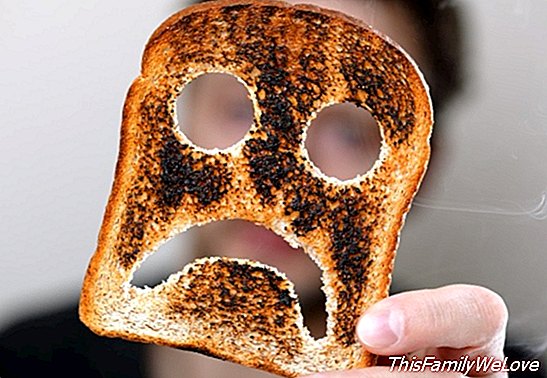Burned food, a common danger to health

Recently the British Food Standards Agency alerted of the danger of over-browning toasts. This very common act in homes can have long-term negative effects since a slice of bread burned in excess increases the chances of cancer in the long term. It is recommended that this food has an orange color and not black.
But not only burnt toast increases the risk of developing cancer. Overcooking other foods such as charring (burnt rice adhering to the paella pan), or meats grilled that they have stayed too long in the fire can cause this disease.
Burning food forms dangerous products
From the Catalan Agency for Food Safety, ACSA, warns of the risk of the appearance of some dangerous substances if the food is subjected to cooking processes in excess of what is recommended. Smoking or burning too much food increases the risk of the appearance of polycyclic aromatic hydrocarbons, HAP like benzopyrene, an element capable of mutating cells and turning them into carcinogens.
This body warns that raw foods have high levels of polycyclic aromatic hydrocarbons that can increase especially in "intense processes such as toasting, ironing, barbecue or smoking". This is because these elements are formed when the fat and juices of the meat drip into the fire causing flames that contain PAH that adhere to the surface of the meat.
The risk of acrylamide formation
Experts also warn that in these cooking processes not only must be careful with the occurrence of HAP. Cooking too much food can also cause the presence of acrylamide, organic compound related to the risk of developing cancer. However, it is important to clarify that a cause / effect link between this element and oncological diseases has not been found.
The British Food Standards Agency warns that the highest levels of acrylamide will be found in foods with a high content of starch that have been subjected to a cooking process above 120 degrees centigrade. In this list of products include chips, bread, cereals, cookies, cakes or coffee.
This compound can also be increased in the home kitchen when the food is baked or fried at high temperature. During the process the process of cooking, the sugar, amino acids and water present in these products combine to form the color and acrylamide. From here also arises the flavor and aroma associated with these cooking methods.
To prevent the appearance of all elements in the kitchen, it is recommended not to exceed 140 degrees at the time of cooking. Whenever possible, it is best to use fire and watch that food is not burned. In this way, the risk of eating PAH or acrylamide will be reduced, and preparing dishes at the recommended temperatures also keeps the nutritional characteristics of these dishes.
Damián Montero




